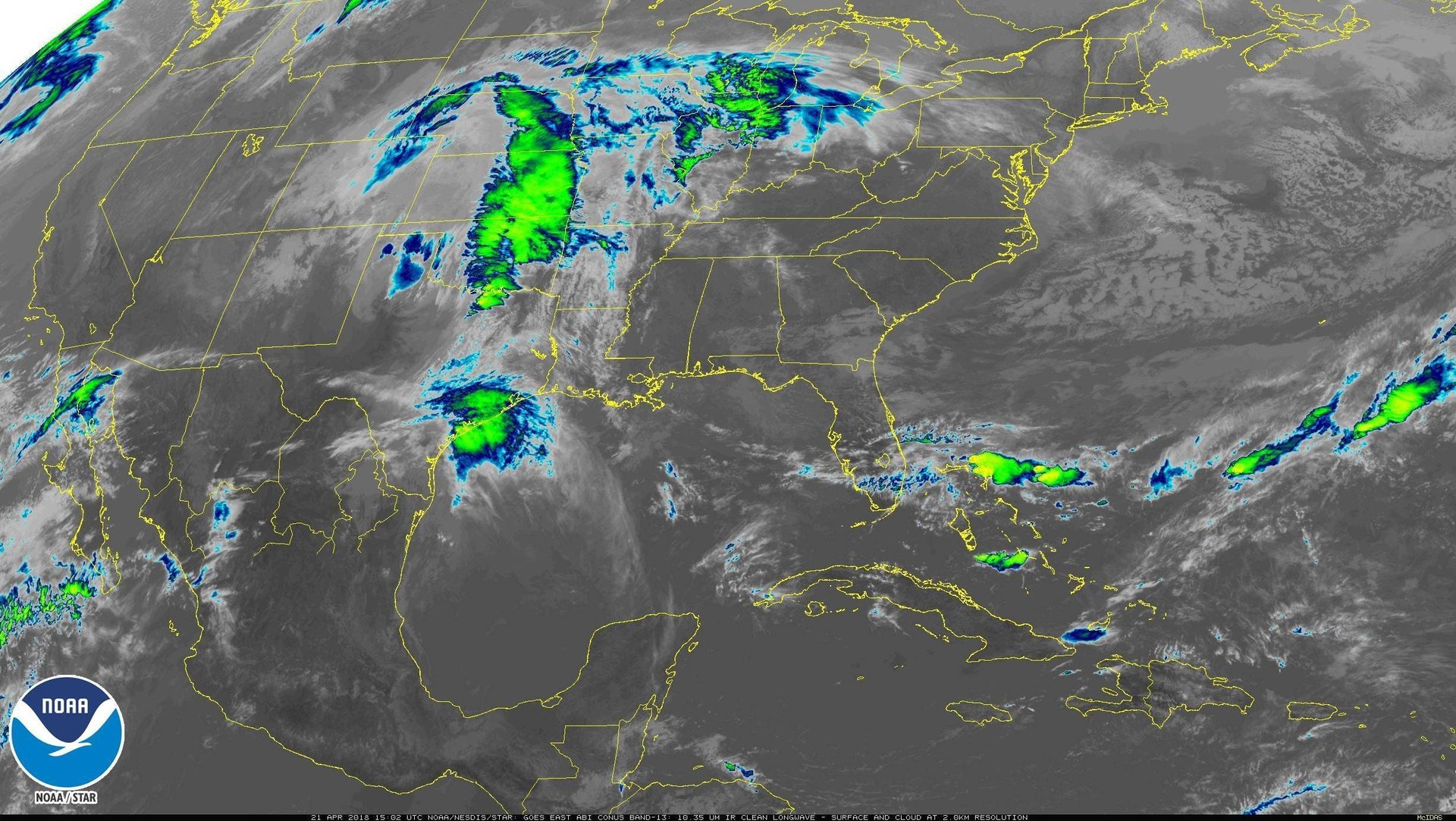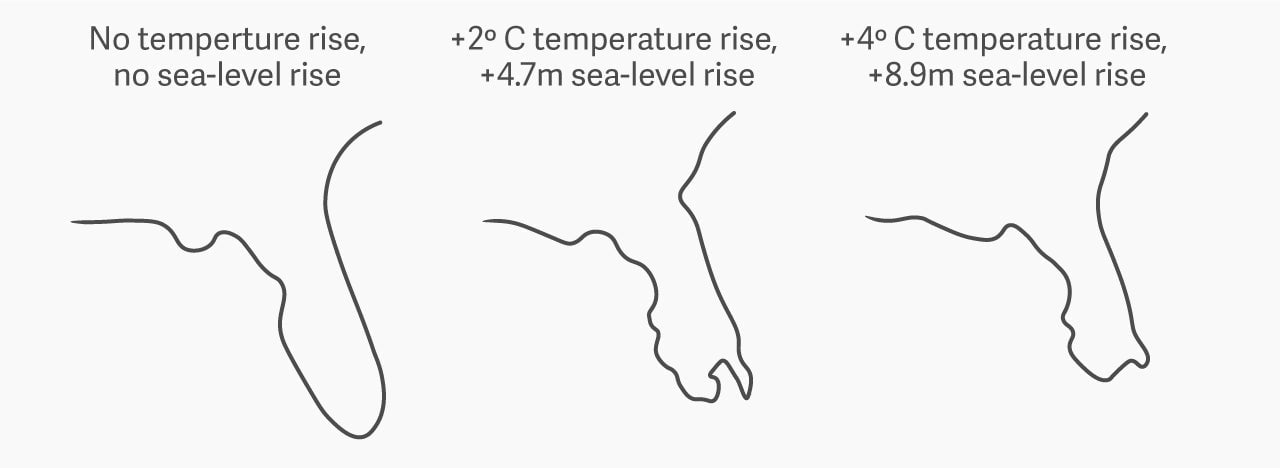After seas rise, here’s how children will be taught to draw Florida
At this point, the least amount of global warming the world can hope for is probably 2°C (3.6°F). Scientists have described anything less as unlikely.


At this point, the least amount of global warming the world can hope for is probably 2°C (3.6°F). Scientists have described anything less as unlikely.
But when it comes to sea level, those 2° may still lock us into 6 meters (20 feet) of average global sea-level rise over the long term. That’s according to research that looked at what happened the last time the atmosphere got this overloaded with carbon dioxide, which was 3 million years ago.
If the global average temperature rises to 4°C (7.2°F)—which models suggest is likely if greenhouse gas emissions aren’t dramatically reduced or eliminated—the seas could rise nearly 9 meters (roughly 29 feet). At that point, large chunks of Antarctica would have melted away, and the land where 153 million people currently live would be submerged. That includes a lot of Florida.
These images are from EarthTime, a collaborative project between Carnegie Mellon University and the World Economic Forum.
Under either scenario, the Florida of the future would look dramatically different. Its rounded peninsula would be transformed into a bizarre stump. School children, learning to draw the outline of their state, would be getting a very different geography lesson.

When this could happen is unclear, and depends a lot on how quickly ice melts. Those hypothetical outlines correspond to a date in the future that is likely several centuries out. “The rates of ice sheet loss are really difficult to predict,” Louise Sime, head of paleoclimate research at the British Antarctic Survey, told the Guardian. “Estimates are anything from 200 to 7,000 years.”
Sea levels have risen roughly 8 inches since 1900, and recent research says the global average sea level is accelerating like a “driver merging onto a highway.” That means decades from now, the annual rate of ocean level rise is likely to be much more dramatic than in recent years.
Estimates for how fast seas will rise are all over the place, because new factors—ways ice could disintegrate, newly discovered tipping points, etc.—are constantly being added to improve models. For example, thanks to new science about how “hydrofracturing” (when meltwater cracks ice shelves) and collapsing ice cliffs could summon rapid collapse and meltdown on the Antarctic ice sheet, a recent paper found that our median global average sea-level rise could be 4 feet 9 inches (about 1.5 meters) by 2100 if we continue on our current fossil fuel-use trajectory. That compares with a projection of 2 feet 5 inches in the 2014 UN Intergovernmental Panel on Climate Change (IPCC) report. It also translates to a range of 3 to 8 feet globally, compared with the 1.6- to 3.9-feet range cited by the IPCC.
But sea-level rise isn’t going to stop at 2100, and research is clear on at least one point: The decisions about greenhouse gas emissions being made now will have consequences well past our century.